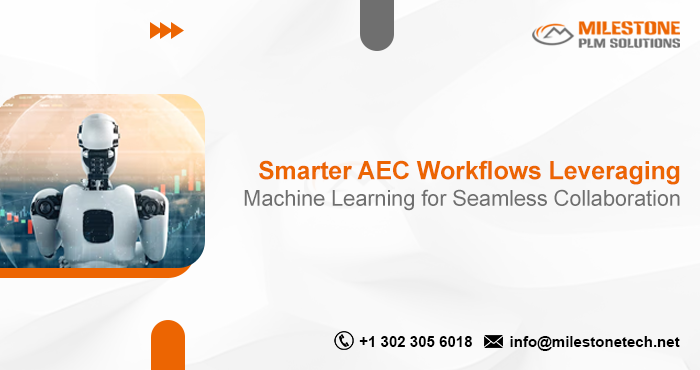AI in Construction: Transforming Efficiency, Safety, and Innovation
- Milestone PLM Solutions
- Oct 24, 2024
- 4 min read
Artificial Intelligence (AI) is revolutionizing industries worldwide, and construction is no exception. The adoption of AI in construction is transforming traditional methods, driving efficiency, improving safety, and fostering innovation across the sector. From planning and design to project management and safety protocols, AI's integration into construction processes is proving to be a game-changer.

Enhancing Efficiency through AI in Construction
One of the most significant impacts of AI in construction is its ability to enhance efficiency. The industry has long been plagued by project delays, cost overruns, and inefficiencies stemming from outdated processes and poor project coordination. AI is tackling these issues head-on by automating various aspects of construction work.
For instance, AI-powered project management tools can predict project timelines, optimize scheduling, and identify potential bottlenecks before they become costly issues. By analyzing past data and real-time project information, AI systems can provide construction managers with actionable insights to keep projects on track and within budget.
Additionally, AI-driven automation in construction allows for faster execution of repetitive tasks. Robots and AI-powered machinery can assist in bricklaying, welding, and even painting, reducing labor-intensive work and enhancing precision. This not only improves the speed of construction but also ensures a higher level of quality.
AI’s Role in Improving Safety on Construction Sites
Safety is a critical concern in the construction industry, with sites often being high-risk environments. AI is playing a pivotal role in enhancing safety measures and reducing workplace accidents.
AI-powered systems can monitor construction sites in real time, analyzing data from cameras, sensors, and drones to detect potential hazards. For example, AI can identify unsafe worker behavior, equipment malfunctions, or structural issues before they escalate. By sending instant alerts to supervisors or workers, AI helps to prevent accidents and ensures that safety protocols are adhered to.
Moreover, wearable AI devices like smart helmets or vests can monitor workers' vital signs, track their location, and alert them if they enter dangerous zones. These AI-enabled wearables significantly reduce the likelihood of accidents by ensuring that workers are aware of their surroundings and in compliance with safety regulations.
The ability of AI to analyze vast amounts of data means it can also identify trends in accident reports and near-miss incidents. This data allows construction firms to proactively address recurring safety risks, further reducing on-site injuries and fatalities.
AI in Construction Design and Innovation
AI is not only improving efficiency and safety but also fostering innovation in construction design and planning. In traditional construction methods, the design phase can be time-consuming and prone to errors. AI is transforming this by offering advanced design solutions through Building Information Modeling (BIM) and generative design.
AI-powered BIM systems allow architects and engineers to create highly detailed 3D models that encompass every aspect of a construction project, from structural components to mechanical, electrical, and plumbing systems. AI can analyze these models to detect potential design flaws, clashes, or inefficiencies before construction even begins, reducing the need for costly revisions.
Generative design, another AI-driven innovation, enables architects to input specific design parameters such as material preferences, spatial requirements, and budget constraints. The AI then generates multiple design options, optimizing for factors like sustainability, structural integrity, and aesthetics. This not only accelerates the design process but also leads to more creative and functional outcomes that may not have been possible using traditional methods.
AI and Predictive Maintenance
AI’s predictive capabilities extend beyond design and project management. In construction, maintaining equipment is essential to avoid downtime and prevent accidents. AI-powered predictive maintenance uses machine learning algorithms to monitor the condition of machinery and equipment in real-time. By analyzing data from sensors, AI can predict when a machine is likely to fail, allowing for timely maintenance that prevents costly delays and enhances equipment lifespan.
Overcoming Challenges and Future of AI in Construction
While the integration of AI in construction offers numerous benefits, it also presents certain challenges. One of the main obstacles is the initial cost of implementing AI technologies. Smaller construction firms may find it challenging to invest in AI-powered tools and systems due to budget constraints.
Additionally, the construction industry needs to address the skills gap by training workers to use and manage AI technologies effectively. As AI automates certain tasks, the demand for tech-savvy workers who can operate advanced machinery and interpret AI-generated data is increasing.
Despite these challenges, the future of AI in construction looks promising. The rapid advancement of AI technologies is expected to continue, leading to even more innovative solutions that will further enhance the industry’s efficiency, safety, and creativity.
Conclusion
The impact of AI in construction is undeniable. From optimizing project management and enhancing safety to revolutionizing design processes and enabling predictive maintenance, AI is transforming how construction projects are executed. As AI continues to evolve, the construction industry will see even more groundbreaking innovations, leading to safer, more efficient, and more sustainable building practices. Embracing AI in construction is not just a competitive advantage—it’s the key to shaping the future of the industry


